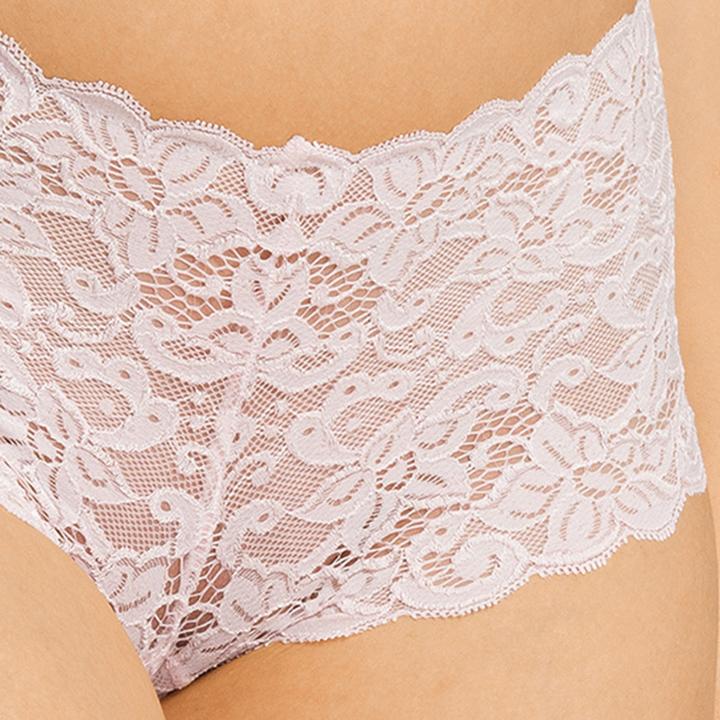

Worrying: K-Tipp finds risky chemicals in almost all briefs tested

K-Tipp had erotic underwear tested for harmful substances. The result: almost all of them contain harmful chemicals - including the hormonally active bisphenol A.
Irritant underwear is considered uncomfortable - but as a recent comparison test by K-Tipp shows, this is the least of its problems. The Swiss magazine for consumers tested women's underwear for chemicals that pose a health risk and found that only two models can be classified as uncontaminated: Only two models can be categorised as uncontaminated. An Oeko-Tex-certified model from the Swiss brand Triumph scored the worst by far.
The level of harmful substances in pants is particularly worrying. They fit snugly and come into contact with the sensitive genital area. Friction, body heat and sweat can cause hormonally active chemicals to enter the bloodstream via the skin.
This was tested
Laboratory experts examined 16 pairs of pants from various brands for two groups of sensitive substances on behalf of K-Tipp:
- Bisphenols are among the most frequently used industrial chemicals. In the textile industry, they are mainly used in the processing of synthetic fibres, for example for coatings or as fixing agents for dyes. They enter the body through food, the skin and even the respiratory tract. There are different types of bisphenols, of which bisphenol A (BPA) is probably the best known. Due to their hormone-like effect in the body, they disrupt the hormone system and can therefore impair fertility and promote hormone-related cancer.
- Detergent residues, namely nonylphenol ethoxylates (NPEO) and octylphenol ethoxylates (OPEO), are not easily biodegradable and, according to the Federal Office for the Environment, are toxic to aquatic organisms even in low concentrations. They have been shown to disrupt the hormone system of fish.
For the evaluation, K-Tipp used a recommendation from 2021 from the EU's Scientific Committee on Consumer Safety (SCCS) as a guideline. This recommends that items of clothing should not exceed the maximum value of 0.8 milligrams of bisphenol A per kilogramme. As several studies suggest that other bisphenols can be similarly harmful, all briefs with a total content of various bisphenols of more than 0.8 milligrams per kilogram have been classified as «highly contaminated». Products with contaminants below this level were categorised as «contaminated».
The sobering results
Only the models from the French brand Etam and the Austrian-based brand Hanro were found to contain no endocrine disruptors. Etam's thong is made in China and is in the mid-price segment with a price of just under 25 francs. The «Moments» panty from Hanro, which is produced in Portugal, is the second most expensive model tested at 55 francs.

The items from the Inditex subsidiary Zara and the Italian brand Intimissimi are considered expensive. Both have a silk content and cost just under 36 and 25 francs respectively. Highly contaminated are the remaining twelve pairs of pants from the following brands - listed according to increasing levels of harmful substances, according to K-Tipp: Manor Woman, H&M, Beldona, Exposed by Magic Silk, Agent Provocateur, Hunkemöller, Obsessive, Calvin Klein, Victoria's Secret, Lascana, Chantelle and Triumph.
Within the category «heavily loaded» the values diverge widely. While the thong from Manor Woman - the cheapest model in the line-up - has 1.8 milligrams of endocrine disruptors per kilo, the mid-priced «Crazy Stupid Love Hipster» from Triumph has a whopping 645.7 milligrams. The most expensive model is also in the middle of the category with 31.7 milligrams: a 65 francs thong from the British brand Agent Provocateur, known for luxury lingerie.
Editor's note: Triumph contacted us by email on 12 May with the following statement:«Although all our products meet all legal requirements as well as the guidelines of the Oeko-Tex Standard 100, we take the increasing public discussion about bisphenols in low concentrations seriously. For this reason, Triumph has developed a forward-looking roadmap in collaboration with innovation partners in order to be able to manufacture products that are already below the limit values completely bisphenol-free in the future.»
Does washing help?
In total, the laboratory found five different bisphenols, including bisphenol A (in seven briefs), the now common substitute bisphenol S (in eleven briefs) and bisphenol F (in six briefs). The products from H&M and Lascana also contained NPEO and OPEO residues.
Important to mention: Bisphenols persist even after washing, as an investigation led by the Association for Consumer Information (VKI) showed last year. 16 pairs of heavily contaminated pants were cleaned in the washing machine with standard washing powder - the result: the bisphenol content could only be partially reduced and remained largely high.
So maybe it's better to switch to simple cotton underwear after all. These also have the advantage that they can be washed hygienically at high temperatures.


Has endless love for shoulder pads, Stratocasters and sashimi, but a limited tolerance for bad impressions of her Eastern Swiss dialect.
From the latest iPhone to the return of 80s fashion. The editorial team will help you make sense of it all.
Show allThese articles might also interest you

News + Trends
Balance test: Even cheap, lightweight rain jackets protect - even after machine washing
by Siri Schubert

News + Trends
Kassensturz tests child trailers: Which two-seater beats the competition?
by Michael Restin

News + Trends
Trail running specialist Hoka launches hiking shoes with Recco technology
by Siri Schubert
